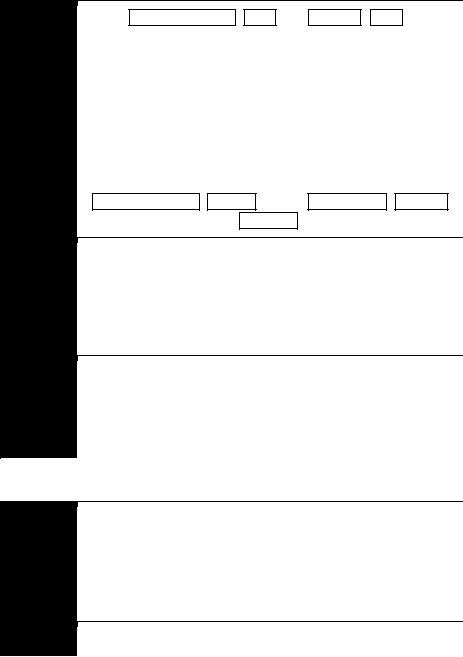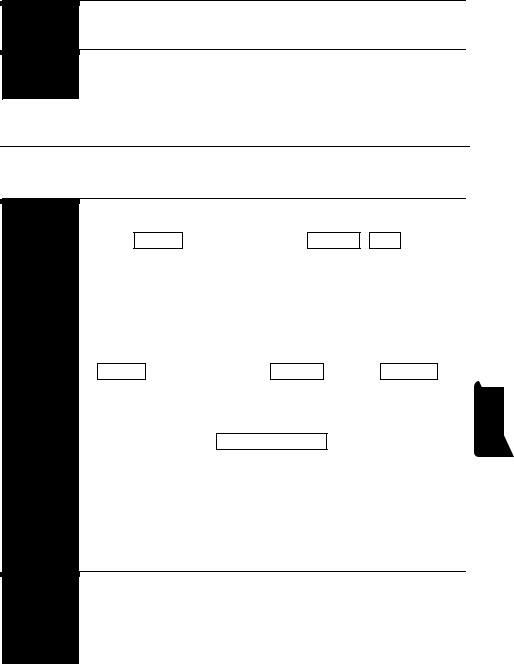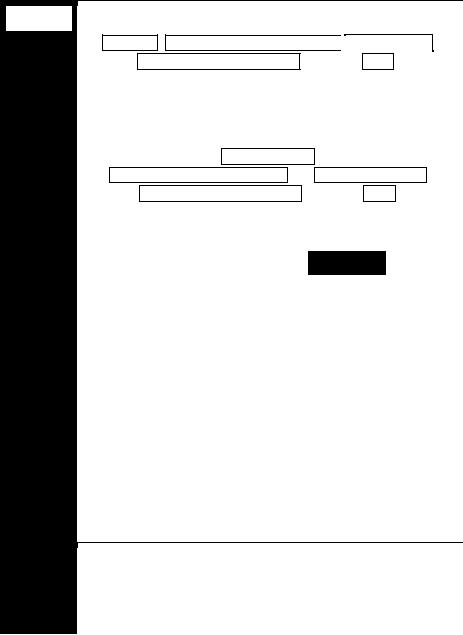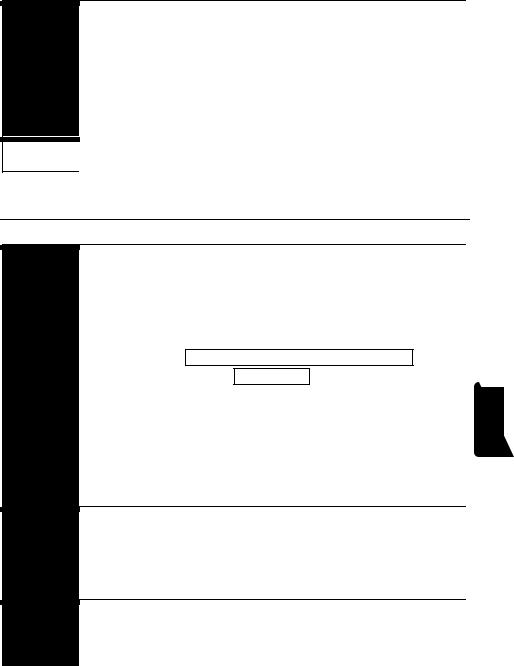Australian Guide to Legal Citation 271
Examples Smithsonian Facilities Authorization Act, Pub L No 108-72, §§ 4–5, 117 Stat 888, 889 (2003).
Child Citizenship Act of 2000, Pub L No 106-395, tit II, 114 Stat 1631, 1633–6. [Not: … 114 Stat 1631, 1633–6 (2000).]
An Act to Amend the Indiana Code concerning Corrections, Pub L No 102-2002, 2002 Ind Acts 1597. [Not: 2002 Inc Acts 1597 (2002).]
24.3.8Amendment, Insertion and Repeal
Rule Where a session law inserts, amends or repeals a provision of a code (or another session law), this may be indicated in accordance with rule 3.8.
Examples Sarbanes-Oxley Act of 2002, Pub L No 107-204, § 201, 116 Stat 745, 771 (2002), inserting 15 USC § 78j-1(g) (2006).
42 USC § 2473(c)(2)(A), as amended by NASA Flexibility Act of 2004, Pub L 108-201, § 2(a), 118 Stat 461, 461.
24.4Constitutions
Rule The titles of US federal and state constitutions should be italicised. Pinpoint references should adhere to rule 24.2.4.
Examples United States Constitution art IV § 3.
United States Constitution amend XXI.
Texas Constitution art 1 § 8.
24.5Delegated Legislation
24.5.1Federal
Rule Where subordinate legislation appears in the Code of Federal Regulations (abbreviated ‘CFR’), it should be cited as follows:
272 Part V — Foreign Domestic Materials
Title of Regulation , Title CFR Pinpoint ( Year ).
The title of the regulation may (but need not) be included. A ‘part’ in the CFR is designated ‘§’. Paragraphs and sections are separated from the part number by a decimal point (for example, ‘§ 101.2’ refers to part 101 section 2). The year should be that of the CFR consulted (not necessarily the year of promulgation of the regulation).
Where subordinate legislation does not appear in the CFR (or there is good reason to cite the subordinate legislation as gazetted), it should be cited in the Federal Register (abbreviated ‘Fed Reg’) as follows:
Title of Regulation , Volume Fed Reg Starting Page , Pinpoint
( Full Date ).
8 CFR § 101.1 (1986).
Whaling Provisions — Consolidation and Revision of Regulations — Collection-of-Information Approval, 50 CFR § 230 (2009).
Enhancing Airline Passenger Protections, 74 Fed Reg 68 983, 68 985 (30 December 2009).
US federal delegated legislation is initially gazetted in the Fed Reg. Important pieces of delegated legislation are then compiled into the CFR. For the same reasons that a session law may be cited instead of a code (see rule 24.3), it may be appropriate to cite the Fed Reg even though a piece of delegated legislation appears in the CFR.
24.5.2State
Rule Where state subordinate legislation appears in a code of regulation, this should be cited where available. Otherwise, subordinate legislation should be cited as gazetted. Citations should appear in accordance with rule 24.5.1. However, the usual abbreviation of the state code or gazette should replace ‘CFR’ or ‘Fed Reg’ as appropriate.
Examples 220 Ind Admin Code 1.1-2-2 (2007).
Australian Guide to Legal Citation 273
Submetering of Natural Gas Service by General Motors Corporation, 30 NY Reg 18 (29 May 2008).
Note State codes of regulation are often referred to as ‘administrative codes’ (usually abbreviated ‘Admin Code’).
24.6Federal Congressional Materials
24.6.1Debates
Rule |
Congressional debates should be cited as follows: |
|
|
Volume Congressional Record Pinpoint ( Year ).
Where it is not otherwise apparent, the chamber (‘Senate’ or ‘House of Representatives’) may be included after the year in the parentheses, preceded by a comma.
Where only a Daily Edition of the Congressional Record is available, it should be cited as follows:
Volume Congressional Record Pinpoint (daily ed, Full Date ).
Pinpoint references to the Daily Edition should include ‘H’ for House of Representatives and ‘S’ for Senate, and should appear in the form:
S/H 
 Page Number (for example, ‘H1987’).
Page Number (for example, ‘H1987’).
In citations to the bound Congressional Record and the Daily Edition, the speaker’s name may be included between the pinpoint and the year. It should appear in parentheses and adhere to rule 6.1.1 (so the speaker’s first and last names should be included and positions should only be included after the name if they are relevant).
Examples 1 Congressional Record 10 (James Garfield) (1874, House of Representatives).
156 Congressional Record H148 (Ann Kirkpatrick) (daily ed, 19 January 2010).
274 Part V — Foreign Domestic Materials
24.6.2Bills and Resolutions
Rule |
Congressional Bills should be cited as follows: |
|
|
Bill Title , Abbreviated Name of Chamber 
 Number of Bill ,
Number of Bill ,
Ordinal Number of Congress Congress ( Year ).
The House of Representatives should be abbreviated ‘HR’, and the Senate should be abbreviated ‘S’.
Congressional resolutions should be cited as follows:
Resolution Title ,
Abbreviated Type of Resolution Res Resolution Number ,
Ordinal Number of Congress Congress ( Year ).
The resolution title may be omitted. The following abbreviations should be used for the relevant type of resolution:
|
Type of Resolution |
|
Abbreviation |
|
|
|
|
|
House Resolution |
|
HR Res |
|
Senate Resolution |
|
S Res |
|
House Concurrent Resolution |
|
HR Con Res |
|
Senate Concurrent Resolution |
|
S Con Res |
|
House Joint Resolution |
|
HRJ Res |
|
Senate Joint Resolution |
|
SJ Res |
|
Senate Executive Resolution |
|
S Exec Res |
Where congressional resolutions are not easily accessible, a citation to Statutes at Large (in accordance with rules 24.3.4–24.3.6) or the Congressional Record (in accordance with rule 24.6.1) may be included between the number of the Congress and the year. If a citation to the Daily Edition of the Congressional Record is included, the year should be omitted (but the full date included in accordance with rule 24.6.1).
Examples Guam Commonwealth Act, HR 100, 105th Congress (1997).
Resolution Condemning the Taliban Regime and Supporting a Broad Based Government in Afghanistan, H Con Res 336, 105th Congress (1998).
Australian Guide to Legal Citation 275
Authorization for Use of Military Force against Iraq: Resolution of 2002, HRJ Res 114, 107th Congress (2002).
Joint Resolution Providing for the Acquisition of Certain Lands in the State of California, HRJ Res 10, 56th Congress, 31 Stat 711 (1900).
HR Res 1010, 111th Congress, 156 Congressional Record H139 (daily ed, 13 January 2010).
Note |
US Bills are referred to as ‘Acts’ before and after enactment. |
|
|
24.7Restatements
Restatements of law published by the American Law Institute should be cited as books authored by the Institute (in accordance with chapter 5). However, where the restatement is a subsequent restatement (that is, where the restatement is not the first restatement), the title should appear as follows:
Restatement ( Ordinal Number of Restatement in Words ) of
Subject Area
(for example, ‘Restatement (Third) of Trusts’).
Pinpoint references should always include a section number. References to comments, reporter’s notes and other subdivisions of the sections should be included after the section number. The word ‘comment’ should be abbreviated ‘cmt’ (and ‘comments’ should be abbreviated ‘cmts’).
American Law Institute, Restatement (Second) of Contracts (1981) § 176.
American Law Institute, Restatement (Third) of the Foreign Relations Law of the United States (1987) § 465 cmt (a).
The restatements are effectively codifications of US common law principles by groups of experts. They are commissioned by the American Law Institute and generally regarded as authoritative.
276 Part V — Foreign Domestic Materials
24.8Other
Rule For further information on the citation of United States materials, see the latest edition of The Bluebook: A Uniform System of Citation.
277
25 Other Foreign Domestic Materials
Note This chapter contains general guidelines for the citation of foreign legal materials (including non-English language materials) that are not otherwise covered in this Guide.
Where specific rules for a jurisdiction are included in the preceding chapters of this Part, those rules should be used. Where foreign legal materials are similar to materials in jurisdictions for which specific chapters are included, the rules for the similar jurisdiction should be adapted as appropriate.
25.1Translations of Legislation and Decisions
25.1.1Non-English Primary Materials Translated by Author
Rule Where the author of a document (or another person on behalf of the author) translates non-English primary materials:
•translations elements in citations should appear in square brackets, following the translated element (for example, ‘Undang-Undang Dasar Republik Indonesia 1945
[Constitution of the Republic of Indonesia 1945]’); and
•translations of titles should not be italicised, even where the titles themselves are.
Where the author has made the translations, this should be indicated at the end of the citation in the appropriate footnote by including ‘[author’s trans]’.
Where another person has translated materials on behalf of the author, this should be indicated at the end of the citation in the appropriate footnote as follows:
[ Translator’s Name trans]
278 Part V — Foreign Domestic Materials
Alternatively, a statement that all translations are by the author (or another person on behalf of the author) should be included in the text, in the author’s note or in the first footnote containing a translation. In that case, it is not necessary to indicate the translator in each footnote.
Examples The legislation provides that a person ‘born in the Kingdom or who arrived before the age of 12 and who has regularly and principally resided there since’7 may not be deported.
__________
7Loi du 15 décembre 1980 sur l’accès au territoire, le séjour, l’établissement et l’éloignement des étrangers [Law of 15 December 1980 on the Access to the Territory, the Stay, the Establishment and the Removal of Foreigners] (Belgium) art 21(1) [Nawaar Hassan trans].
8Code civil [Civil Code] (France) art 147 [author’s trans].
__________
*All translations are by the author, except where otherwise indicated.
1Urheberrechtsgezetz [Copyright Law] (Switzerland) 9 October 1992, SR 231, art 29(2)(a).
25.1.2Foreign Primary Materials Consulted in English (Published Translations)
Rule Where a published translation of legislative materials or judicial decisions is cited, a citation to the primary source should be included in English (and in accordance with rules 25.2–25.3), followed by a citation to the published translation in square brackets.
The published translation should be cited in accordance with the applicable rules of this Guide for the type of source (for example, in accordance with chapters 4 or 5 or rule 6.15). However:
•the name of the author or editor of the published translation should be followed by ‘trans’; and
280 Part V — Foreign Domestic Materials
25.2Judicial and Administrative Decisions
Rule Foreign judicial, quasi-judicial and administrative decisions from common law systems should be cited as consistently as possible with chapter 2. In particular:
•where a case is reported, it should be cited in the report series (the name of which, if not in the Appendix, should be written out in full but not italicised in accordance with rule 2.3.2);
•in accordance with rule 2.6, the name of the court may be included in parentheses after any pinpoint references; and
•abbreviations of judicial titles should appear as they do in the case or decision cited (and otherwise in accordance with rule 2.9.1).
Citations of other foreign decisions should include the following elements where available and appropriate:
•the case name (the parties’ names or any name by which a case is commonly referred to);
•the name of the court or body deciding the matter (to which the jurisdiction should be added if it is not apparent from the name);
•the case or decision number;
•the full date of decision;
•the details of any report series in which the case is contained, preceded by ‘reported in’; and
•a pinpoint reference (where necessary).
These elements should be separated by commas. However, a comma should not precede ‘reported in’. These elements should appear in the order in which they are listed above, unless convention in the relevant legal system is to do otherwise.
Where it would assist in retrieval, a URL may be included after the first citation to a decision. The URL should adhere to rule 6.15.6.






 Number of Bill ,
Number of Bill ,







 Page Number (for example, ‘H1987’).
Page Number (for example, ‘H1987’).